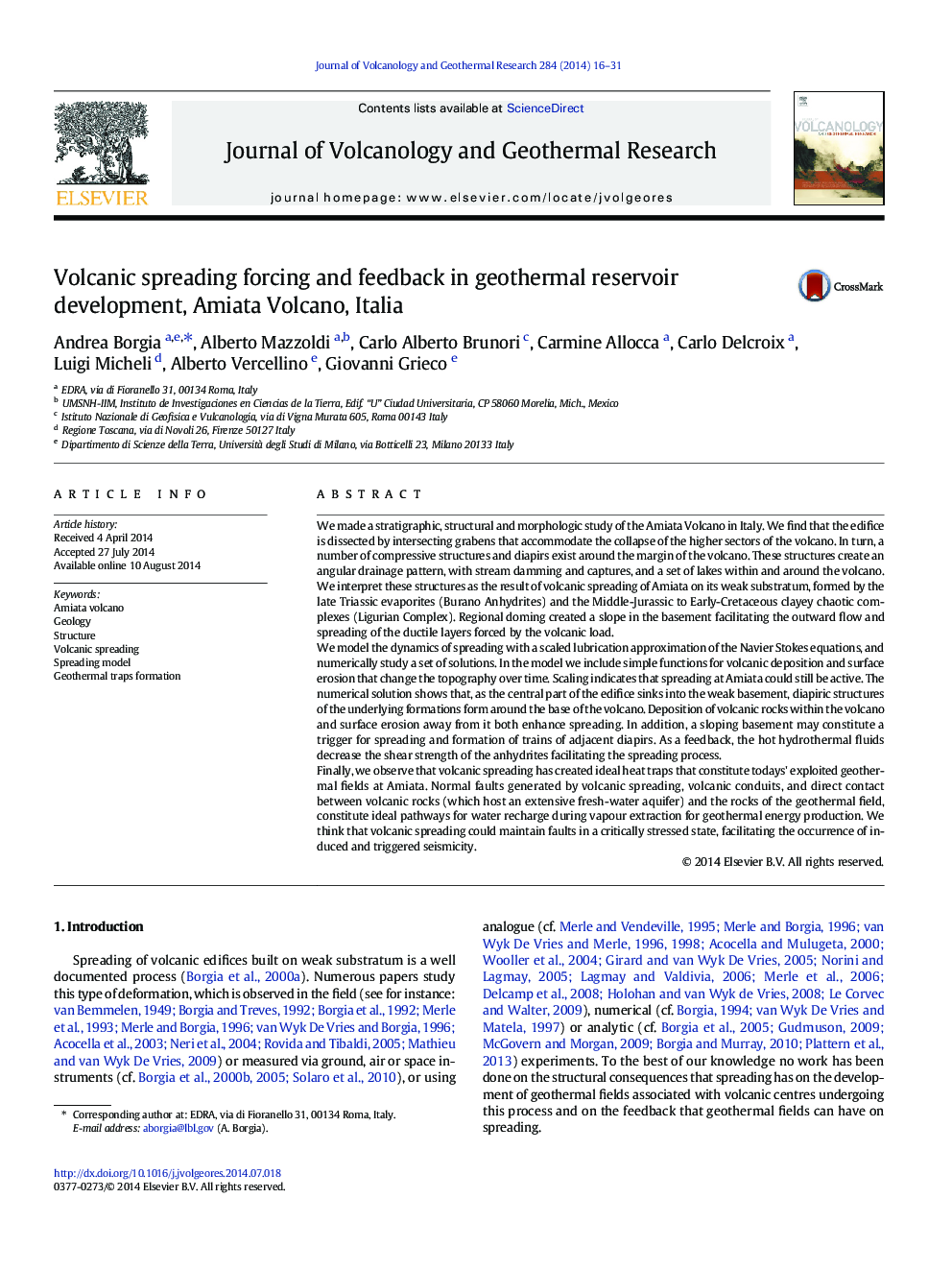| کد مقاله | کد نشریه | سال انتشار | مقاله انگلیسی | نسخه تمام متن |
|---|---|---|---|---|
| 4713096 | 1638338 | 2014 | 16 صفحه PDF | دانلود رایگان |

• Detailed geologic and structural map of Amiata Volcano
• Volcanic spreading occurs because the edifice sinks into shaley and anhydrite layers.
• Volcanic spreading formed summit grabens and basal uplift diapiric thrusts.
• Basal thrust structures are ideal heat-traps for geothermal energy accumulation.
• Modelling shows that spreading could still be active.
We made a stratigraphic, structural and morphologic study of the Amiata Volcano in Italy. We find that the edifice is dissected by intersecting grabens that accommodate the collapse of the higher sectors of the volcano. In turn, a number of compressive structures and diapirs exist around the margin of the volcano. These structures create an angular drainage pattern, with stream damming and captures, and a set of lakes within and around the volcano. We interpret these structures as the result of volcanic spreading of Amiata on its weak substratum, formed by the late Triassic evaporites (Burano Anhydrites) and the Middle-Jurassic to Early-Cretaceous clayey chaotic complexes (Ligurian Complex). Regional doming created a slope in the basement facilitating the outward flow and spreading of the ductile layers forced by the volcanic load.We model the dynamics of spreading with a scaled lubrication approximation of the Navier Stokes equations, and numerically study a set of solutions. In the model we include simple functions for volcanic deposition and surface erosion that change the topography over time. Scaling indicates that spreading at Amiata could still be active. The numerical solution shows that, as the central part of the edifice sinks into the weak basement, diapiric structures of the underlying formations form around the base of the volcano. Deposition of volcanic rocks within the volcano and surface erosion away from it both enhance spreading. In addition, a sloping basement may constitute a trigger for spreading and formation of trains of adjacent diapirs. As a feedback, the hot hydrothermal fluids decrease the shear strength of the anhydrites facilitating the spreading process.Finally, we observe that volcanic spreading has created ideal heat traps that constitute todays' exploited geothermal fields at Amiata. Normal faults generated by volcanic spreading, volcanic conduits, and direct contact between volcanic rocks (which host an extensive fresh-water aquifer) and the rocks of the geothermal field, constitute ideal pathways for water recharge during vapour extraction for geothermal energy production. We think that volcanic spreading could maintain faults in a critically stressed state, facilitating the occurrence of induced and triggered seismicity.
Journal: Journal of Volcanology and Geothermal Research - Volume 284, 1 September 2014, Pages 16–31